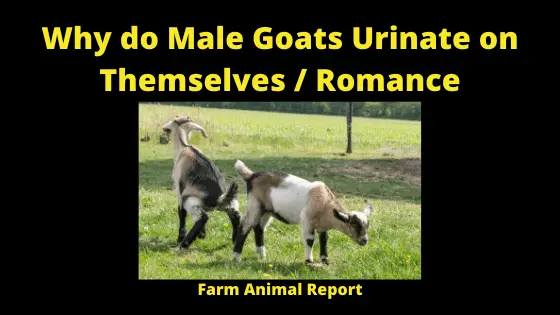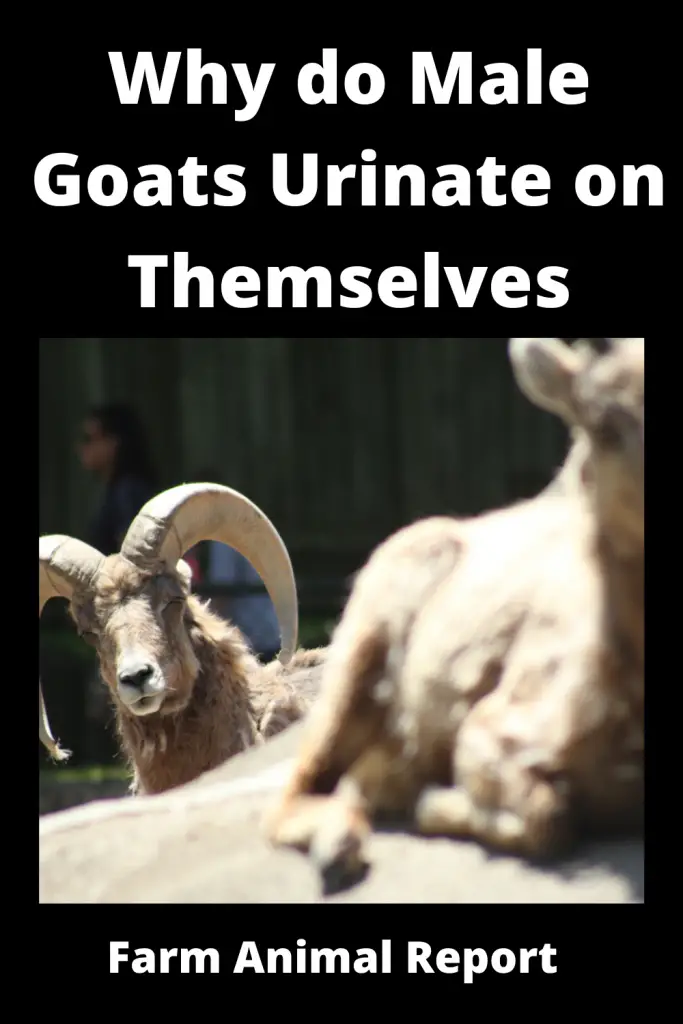- Romance / Rut
- Hierarchy
- High Mating Activities
- Male Cologn
- Scent Glands not working because of Dehorning
Why Do Goats Pee on Themselves
As a General Rule, the male bucks pee all over their front legs and beard during the rut. When female goats urinate outwards towards them it creates an irresistible scent that masks any other smells they might have at that time of year due to secretions from glands on the head or around testicles spraying themselves down in their own urine covering everything in sight including beards chests face hoods etc.
Why do Goats Urinate on Themselves – The bucks do smell when they are in a rut which starts when the days start getting shorter in July. They have scent glands behind their horns which are the source for most of the really bad “Bucky” odor. When we dis-bud the goats (burn off the site of their horns so they will not grow), we burn the area behind the horn on the bucks to destroy those glands, it does not make them smell like posies but they smell better.
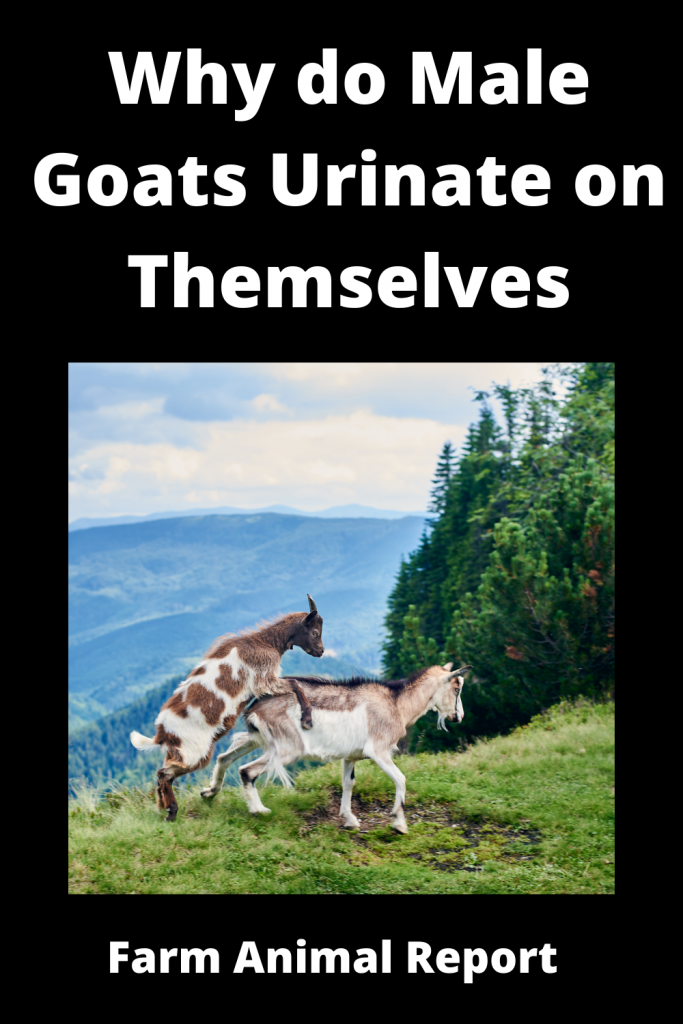
The bucks pee all over their front legs and beard during the rut. When the doe,s pee, the buck sticks his nose in the urine as it comes out. The reason buck goats smell so bad is because of scent glands on their heads and ball areas. These are triggered by the rut in the fall months which in turn stimulate the does to go into heat.
Also, they pee on their heads to make themselves more attractive to females. They rub their heads in the dirt where the doe,s go pee. The buck’s head is covered with mud and urine and he takes great pride in his odor. The bucks are still friendly and often come over and rub to get the flies off or want to scratch their heads
See Amazons Resources on the Science of Raising Goats
Buck Smell – Strong Musky
Bucks stink with a strong musky odor, which comes from both their scent glands, located near their horns, and their urine, which they spray on their face, beards, front legs and chest. They usually spray themselves during rut — that is, the time when the does are in estrus. Rut usually occurs in late summer through fall, and it is the time when the buck is most smelly.
While you may not find the odor pleasing, does find it irresistible.
When Do Bucks Stink?
Bucks smell pretty much all the time, but the rut causes them to smell worse. They will urinate on themselves then more than any other time of the year. Buckling’s, or young male goats, usually start smelling like bucks when they become sexually mature. Since bucklings can become sexually mature as young as 2 months, you may have a stinky youngster at that age.
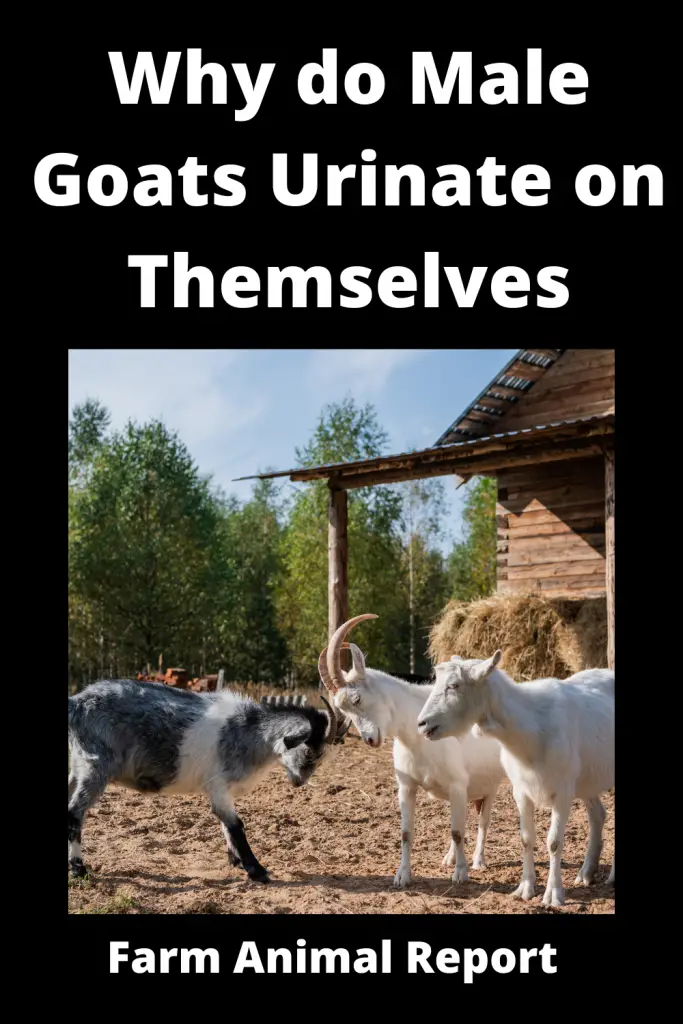
Modes of Behavior in Goats
Grazing and Watering Behavior
Daily feed ingestion activities in goats comprise 1/3 of all activities. Although goats ingest feed more rapidly than sheep, their grazing period takes longer than sheep. The reason for this is that they are excessively selective and mobile while grazing. Since front incisors in goats have a higher outward inclination, they can gnaw tree barks and trunks.
They detach grass with the aid of their tongues and front incisors and complete their grazing behavior by shredding them between their teeth. Goats conduct their watering behavior in the form of sucking. As is the case in all animals, water requirement in goats varies according to the variety and condition of feed, and lactation and pregnancy status.
Water intake in goats increased at increased environmental temperature, and during periods such as during pregnancy and lactation. Goats mostly graze at lower and flat places, but they also like to roam and graze at steep hillsides and rocky inclines.
See Our Guide – 8 Ways to Make Money from Goat Farming
They are also capable of treading 14-15 km a day at the pasture. Goats can take advantage of low-quality pastures, maqui, and bushes. They can stand on their rear legs and eat the sprouts, buds, and leaves on the branches of leaves. There are many factors that influence the grazing period.
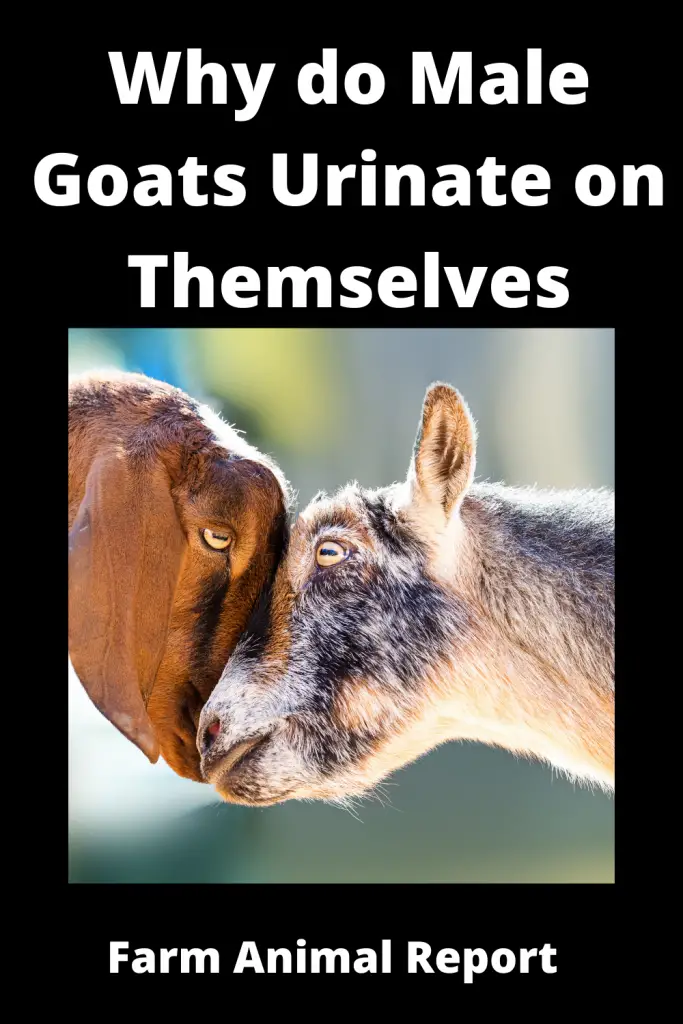
These are respectively: climate conditions, the quality of the pasture where the animals graze, live weight, race, size of the herd, age, health condition, the condition of the goat’s hair cover, and the parasite status, and many other factors. During periods where air temperatures increase, goats deliberately decrease their intake of feed to compensate for heat stress.
They tend to graze more during the early morning and late evening during warm seasons. Furthermore, the central and peripheral nervous systems, as well as hormones, are also known to have an influence on the grazing behavior of goats. Since adult goats are better able to distinguish the weeds to which they are accustomed, and that are nourishing they can obtain them in a shorter period of time than young goats.
There are also variations between races with respect to the grazing period. For instance, goats that are bred for angora yield graze for longer periods as compared to milk goats. Goats display selective behavior toward their favorite plants while grazing in the pasture. The taste and smell of plants play an important role in their selection.
Another factor that is influential in the selection of feeds at pasture is the nutrient and toxic content of plants. During studies, goats have been observed to have a higher preference for plants with high nutritious content. Physiological conditions such as lactation and pregnancy are also influential in goats’ feed preferences. Pregnancy and lactation have been reported to increase the total daily time of feeding, the frequency of feeding, the total daily time of rumination, and the frequency of rumination.
Social Behavior in Goats:
Hierarchical Behavior;
Goats are animals with herd instincts. Their relationships with other individuals within the herd lead to the formation of a hierarchical structure among them. This condition which we call social hierarchy allows them to live together. Factors such as temperament, live weight, and the presence of horns play an influential role in the social hierarchy amongst goats. Especially the presence of horns has a significant place in determining the individual’s place within the herd. Animals that are placed high in the hierarchy fully exhibit, grazing, resting, mating, and general activity behavior.
Antagonistic (Combative) Behavior;
Agonistic behavior in goats are behaviors such as attacking, escape, threatening, and defense. The reason for these behaviors in goats is the instinct to protect both themselves and their food sources. Agonistic behavior is observed to be 50% higher in males. The most important cause of this is the fact that females have no horns or weak horns. Agonistic behavior modes in goats are observed mostly in the form of attacking, threatening, and submission. Knowledge of these behaviors is important for breeding and handling animals.
Threatening Behavior;
As the number of living creatures in a population rises, competition for food, living space, and mates increases. Competition leads to the emergence of a social hierarchy among animals that make up the group.
The individual which proves their superiority has the chance to meet its vital needs before others. These individuals exhibit symbolic threatening behavior. Animals that are dominant within the herd try to have their superiority recognized by other animals through certain sounds and motions to express their intent to the other animal.
Attacking Behavior;
It is perhaps the most important of agonistic behaviors. Environmental factors have a fairly high influence on the emergence of these behaviors. We could list herd size and physical amenities among these factors. For instance, increased herd size can increase attacking behavior since it will limit food, water, and shelter areas. Attacking behavior also increases with sexual maturity. These behaviors mostly manifest in the form of head-butting.
Submissive Behavior;
This mode of behavior mostly manifests in the form of accepting defeat following threatening and aggressive behavior.
Sexual Behavior in Goats
In goats, these can be listed as courting, estrus, mating, and pregnancy-related behavior. Factors such as sex, race, feeding, and day length are important in terms of behavioral differences. For instance, in bucks, this activity emerges most during periods when day length shortens. Female goats in their mating season secrete some chemicals called pheromones from their urine and secretions in order to increase the interest of the opposite sex.
Male goats that detect this pheromone extend their head upwards, back their upper lip, which is called the Flehmen movement. In some cases, male goats cause an enlargement in their male organ and urinate toward their front legs, and can secrete pheromones from their own body by smelling this urine.
Estrus Behavior in Goats;
Goats that approach rutting or are already rutting exhibit a marked decrease in their feed consumption and milk production. They are quite mobile during this period, constantly moving their tail while bleating and seek male goats within the herd.
They constantly pounce on other goats and allow other goats to pounce on them. When they meet with the buck, they let him pounce on them. Buck on the other hand secretes odors to attract goats in a rut. During this period bucks are aggressive and display a constant wish for mounting. They also sniff and lick the section of the goat and make grunting sounds. They kick the sides of the goat with their front legs.
Buck Goat Effect;
Buck that had been isolated from the goat herd for a long time (4-6 weeks) prior to the addition of male goats are observed to influence the reproductive mechanisms of goats upon being re-introduced into the herd through pheromones they secrete from their skin and around their eyes, and female goats are similarly observed to influence buck through some pheromones in their secretions and urine.
Courting Behavior in Goats;
Courting behavior is of great importance for successful mating in goats. These behaviors include the male goat sniffing the rutting female’s perineal region, and hitting the goat’s flank with front legs, and making noises in the meantime.
Female goats respond to these behaviors by urinating and by moving forward. The male goat on the other hand sniffs the urine, sometimes licks it, and shakes his head from side to side while making the Flehmen movement. Courting behaviors that are rarely seen in female goats are to sidle up to the male, trying to hide under his chest, and leaning her body along the male goat’s flank.
Mating Behaviors in Goats;
The male goat bounces the goat which he had found to be in a rut and exhibits the mounting behavior by grasping it firmly from its buttocks. Mating is achieved through repetitive pushing motions to the rear of the goat. The event occurs after the mounting movement and the male goat unmounts from the goat and concludes the mating.
Parturition and Maternal Behavior in Goats
The behavior during the birth period can be studied under three headings. They are prenatal, during birth, and postnatal behavior. Major behaviors observed in goats before birth are a decrease in the desire to feed, keeping the male goat away, slower movements, and frequent urination.
Also moving away from other goats (76%), debleating (57%), chasing away or head-butting animals in its proximity, and aggressive behavior can also be observed (42%). Behavior during the birth itself is the following; the period between the onset of uterine contractions in the goat and the expulsion of the kid is defined as birth and occurs over a period of approximately three hours without help in a standing or prone position.
Postnatal behavior and the relationship between the mother goat and the kid are behaviors that begin immediately after birth. Maternal bonding begins with birth and ends with the weaning period. Age, number of births, the kid’s need for nutrition, race, birth type, and stimulus by the kid (warmth, sucking, moving) are influential on mothering behavior.
The mother goat immediately beginning to lick her kid and allowing the kid to suckle herself are the first indications of mothering behavior.
Abnormal Sexual Behaviors in Goats
Homosexuality;
Homosexuality is a behavior that is observed among domesticated sexually mature male mammals and manifests in the form of mutual mounting behavior. Isolation of male animals from females promotes homosexual behavior. When males in this condition are once again introduced to female’s heterosexuality emerges again.
High Sexual Activity;
High sexual activity is more than normal numbers of mounting, mating, and mounting by male mammals.
Low Sexual Activity;
Low sexual activity is less than normal numbers of mounting, mating, and sperm deposit by male mammals. This condition is always observed in the form of an absence of desire to mount or mate.
Goat Breeds
| Goat Breeds | Meat | Dairy | Wool | |
|---|---|---|---|---|
| Boer | Alpine | Angora | ||
| Genemaster | Lamancha | Cashmere | ||
| Kiko | Nigerian Dwarf | Pygora | ||
| Kinder | Nubian | |||
| Myotonic | Oberhasil | |||
| Pygmy | Saaneen | |||
| Savanna | Sable | |||
| Spanish | Toggenburg | |||
| Tennessee Meat Goat | ||||
| TexMaster |
Goat Breeder Associations
| Goat Association | Location | Link |
|---|---|---|
| American Goat Breeders Association | United States | AGF |
| English Goat Breeders Association | UK | EGBA |
| Canadian Meat Goat Association | Canada | CMG |
| Minature Goat Breeders Association | Australia | MGBA |
| Boer Goats | South Africa | BGSA |
| American Boer Goat Association | United States | ABGA |
| World Goat Breeders Associations | List | WGBA |


